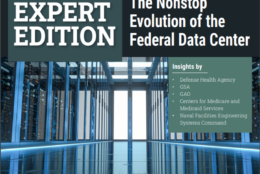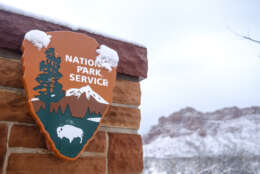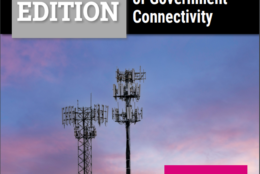SDFM The Business of Defense
-
Best tech at speed. That’s the ultimate goal that the Army’s Wayne Sok wants for the multiaward technology contracts his team manages. Sok is product lead for the Computer Hardware, Enterprise Software and Solutions program and its IT e-mart digital storefront.
June 02, 2022 -
In the never-ending work of information technology modernization, federal agencies have been working on three tracks when it comes to cloud computing. They’ve moved at least some legacy applications to the cloud in what’s commonly called lift-and-shift.
June 02, 2022 -
Dr. Peter Hotez, who helped develop a patent-free COVID-19 vaccine, has tested positive himself for a breakthrough strain of the virus.
June 02, 2022 -
In this second article in our series, Leading Voices in Federal Contract Management, we hear from Rob Burton, a Crowell & Moring lawyer and former OFPP leader, about the value of technology to businesses that want to compete for government contracts.
June 01, 2022 -
There are three key elements agencies need to adopt to survive on this new battlefield: zero trust, resilience and adversarial thinking.
June 01, 2022 -
Through Thunderdome, DISA hopes to determine the abilities of SASE and SD-WAN to manage cybersecurity to the edge, but also knows that additional work will be necessary.
June 01, 2022 -
Contractors can focus on what feels like a distinct set of cyber regulations and requirements, or expand their aperture to think about mitigating risk. But with the requirements for NIST 800-171 and CMMC those two choices may have more overlap than most people realize.
June 01, 2022 -
It’s been more than a decade since OMB launched its initial data center consolidation effort. Agencies have winnowed down the government’s data centers, but now they are pivoting to drive green and operational efficiencies.
May 27, 2022 -
During nearly 35 years with the FBI, William “Bill” Shackelford moved up the ranks from a fingerprint technician to the bureau’s archives specialist. Learn about him now during Federal News Network’s May We Say Thank You event.
May 27, 2022 -
May we say thank you, Steve Elkinton, for helping develop America’s magnificent National Trails System as a landscape architect with the National Park Service. Learn about him in this first-person account during Federal News Network’s May We Say Thank You event.
May 27, 2022 -
Date: On demand Duration: 1 hour It’s been clear since the term “zero trust” first landed in the federal sector that ensuring the identity of the user is central to implementation. The Cybersecurity and Infrastructure Security Agency…
May 27, 2022 -
For certain military commands, program planning and budget execution are offset from their direct authority. A case in point is U.S. Northern Command (USNORTHCOM) and the co-located North American Aerospace Defense Command (NORAD).
May 27, 2022 -
Zero trust often gets grouped in with technology buzzwords. But unlike solutions that have their moment and fade away, zero trust has the full weight of an executive order behind it. What it’s lacking, though, is guidance for how to implement it.
May 26, 2022 -
Lerner discusses with hosts Mark Masselli and Margaret Flinter how public health must continue its focus on stopping gun violence and what lawmakers can do
May 26, 2022 -
From precision agriculture to city-scale test beds, the government is studying how to tap 5G to improve network services as well as expand into innovative new use cases. We peel back the curtain to find out about efforts at ARS, DHS, NSF and VA.
May 25, 2022















